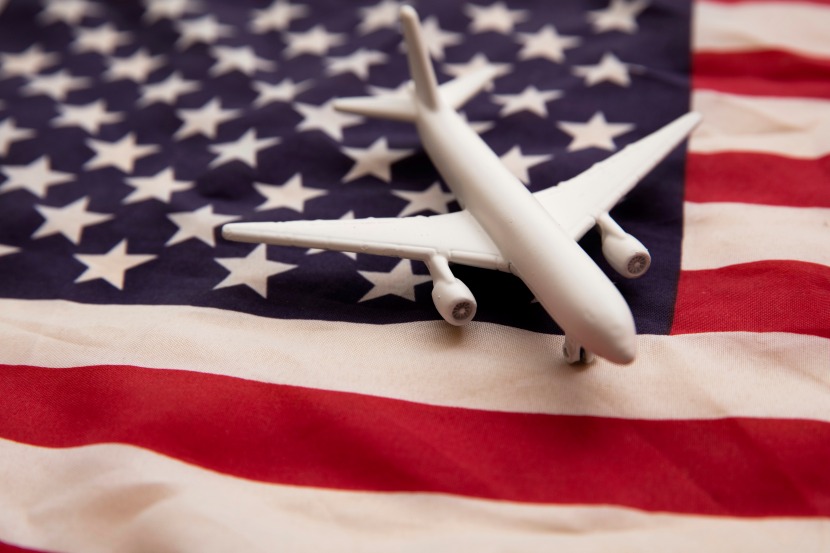Thursday, July 31, 2025

In May 2025, international tourism to the United States saw a notable dip, with the country receiving over five and a half million foreign visitors. This represents a seven percent decrease from May 2024 and is only eighty four percent of the volume recorded in May 2019, prior to the pandemic. Most of the visitors came from neighboring countries, with Mexico, Canada, and the United Kingdom being the largest sources of international tourists. The decline in arrivals signals a slower recovery for inbound tourism to the United States, as the global tourism continues to adjust to post-pandemic realities.
Despite of the seasonal trends that typically drive the foreign visitors, the dip in number of tourists suggests that recovery remains inconsistent, especially for markets outside of North America. These visitors totaled around 2.96 million, marking a 2.8 percent decline yearly.
Top Source Countries for U.S. Visitors
The largest group of international visitors to the United States. in May 2025 continued to come from Mexico, contributing 1.39 million travelers. Canada followed with 1.28 million, and the United Kingdom was in third place with 364,000 visitors. Other countries, including India and Brazil, also remained significant contributors to U.S. tourism. However, the data clearly highlights the dominance of North American countries, underscoring the limited international recovery beyond these borders.
Among the overseas visitors, leisure travel led the way, with the United Kingdom contributing over 312,000 leisure travelers, followed by 50,636 business visitors. India followed with more than 212,000 leisure tourists, along with 42,944 business travelers. The presence of business and student travelers continues to reflect the importance of the U.S. as a hub for global commerce and education, despite the overall decline in foreign arrivals.
Business and Education Travel Insights
Along with leisure tourism, business and education sectors continues to see considerable demand. The U.K., India, Germany, Japan, and China were identified as the leading markets for business arrivals in May 2025, pointing to the ongoing importance of transatlantic business travel and growing ties with Asian economies.
The United States maintained its position as a top destination for international students, with China leading the market with 7,658 arrivals, followed closely by India with 7,397. South Korea, Brazil, and Taiwan also ranked among the top five contributors to United States. student travel, highlighting the country’s continued appeal as a destination for higher education and academic exchanges.
Surge in U.S. Outbound Travel
While international visitors to the United States declined, American travel abroad surged in May 2025. A total of 9.67 million United States citizens traveled overseas, representing a 4.5 percent increase compared to May 2024. This figure is also 113.4 percent of the number of United States. travelers recorded in May 2019, indicating that American outbound tourism is at an all-time high post-pandemic.
Mexico remained the top destination for American travelers, with over 3.35 million departures. The country alone accounted for 40.4 percent of all United States international departures in May 2025. Europe followed closely as the second largest region for United States outbound travel, seeing a 6.1 percent year-over-year increase in departures to 2.53 million travelers.
Destination Preferences for U.S. Travelers
Travel patterns in the U.S. reflect a blend of short-haul and long-haul travel preferences. North America, including Mexico and Canada, accounted for nearly half (49.5 percent) of all U.S. outbound departures, while overseas destinations made up 50.5 percent. The Caribbean, along with Mexico, remains an especially popular vacation choice for United States travelers, contributing 52.2 percent of total departures.
With Mexico continuing to dominate outbound travel, it is clear that Americans favor relatively closer destinations. However, the growing interest in European travel—especially given the 6.1 percent growth in departures—is a promising trend for long-haul tourism. This preference for diverse international destinations also illustrates a shift towards more varied global travel post-pandemic.
Shifting Travel Dynamics: What’s Behind the Changes?
The changing trends in United States inbound and outbound travel reflect several factors that may be influencing global tourism. Exchange rate fluctuations, the relative strength of the U.S. dollar in certain regions, and air connectivity issues are likely contributing to the challenges seen in international travel recovery. Meanwhile, the strong growth in United States outbound travel highlights pent-up demand for leisure trips and an increasing confidence among American travelers to explore destinations beyond North America.
The current landscape suggests that U.S. outbound tourism is experiencing an impressive rebound. In contrast, inbound tourism remains muted, particularly from markets outside North America. The uneven recovery of global tourism will likely continue to shape the travel strategies of airlines, hospitality sectors, and tourism boards, as they adjust to these evolving trends.
The Global Outlook for Travel
The travel data from May 2025 indicates that the global tourism market is in the midst of a rebalance. While U.S. inbound tourism struggles to regain pre-pandemic levels, outbound travel from the U.S. has reached new heights. The summer travel season will be a critical period for monitoring whether inbound tourism to the United States picks up momentum, and the outbound travel continues its upward trajectory.
Airlines and travel companies around the world are likely to tailor their services to meet these new travel dynamics. With an increasing number of Americans heading overseas, these shifts in travel behavior could influence pricing strategies, flight schedules, and marketing approaches in the coming months.
Economic Implications for U.S. Domestic Tourism
A significant takeaway from the May 2025 data is the growing imbalance between inbound and outbound United States travel. This shift could have long-term economic impact on United States travel markets that are heavily dependent on tourism. While the United States continues to send travelers abroad, its tourism-dependent sectors may need to adjust to the slow recovery of inbound international tourists. While the United States tourism industry remains a leader in global business and education, it faces challenges in regaining the arrival of foreign tourists.








